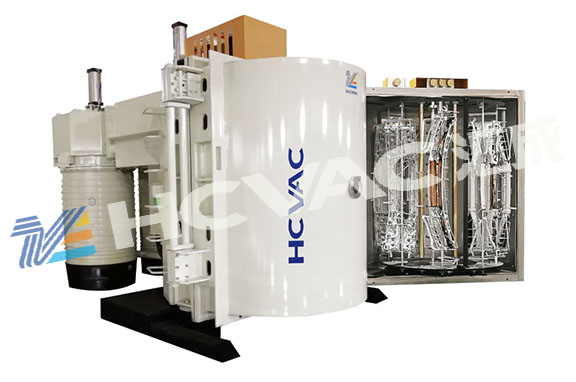Many people always simulate two things about vacuum coating, sputtering and coating of
pvd coating machine.
The pvd coating machine uses PVD-physical vapor deposition, which refers to the process of transferring atoms or molecules from the source to the surface of the substrate by using a physical process to transfer substances. Its function is to spray some particles with special properties (high strength, wear resistance, heat dissipation, corrosion resistance, etc.) on the matrix with lower performance, so that the matrix has better performance.

Pvd coating machine vacuum coating basic methods: vacuum evaporation, sputtering, ion plating (hollow cathode ion plating, hot cathode ion plating, arc ion plating, active reactive ion plating, radio frequency ion plating, DC discharge ion plating)
Vacuum evaporation, sputtering, ion plating
Vacuum plating mainly includes several types of vacuum evaporation, sputtering and ion plating. They are all used to deposit various metal and non-metallic films on the surface of plastic parts by distillation or sputtering under vacuum conditions. This method can obtain a very thin surface coating, and at the same time has the outstanding advantages of fast speed and good adhesion, but the price is also high, and there are fewer types of metals that can be operated. It is generally used as a functional coating for higher-end products.
The vacuum evaporation method is a method of heating metal under high vacuum, melting and evaporating it, and forming a metal film on the surface of the sample after cooling. The thickness of the coating is 0.8-1.2um. It is necessary to fill in the minute irregularities on the surface of the molded product to obtain a mirror-like surface, regardless of whether vacuum deposition is performed for the purpose of obtaining a mirror effect or vacuum deposition is performed on Duasteel, which has low adhesion. Undercoat treatment is carried out.
Sputtering usually refers to magnetron sputtering, which is a high-speed low-temperature sputtering method. The process requires a vacuum degree of about 1×10-3Torr, that is, a vacuum state of 1.3×10-3Pa is filled with inert gas argon (Ar), and is added between the plastic substrate (anode) and the metal target (cathode). When the high voltage direct current is applied, the electrons generated by the glow discharge excite the inert gas to generate plasma, and the plasma blasts the atoms of the metal target material and deposits them on the plastic substrate. Generally, DC sputtering is used for most metal coatings, while RF AC sputtering is used for non-conductive ceramic materials.
Pvd coating machine ion plating is a method of using gas discharge to partially ionize the gas or evaporated material under vacuum conditions, and to deposit the evaporated material or its reactant on the substrate under the bombardment of gas ions or evaporated material ions. These include magnetron sputtering ion plating, reactive ion plating, hollow cathode discharge ion plating (hollow cathode evaporation method), multi-arc ion plating (cathode arc ion plating), etc.
Coating:
Coating, also known as brush plating or slotless electroplating, is a technology for local rapid electrochemical deposition of metal on the surface of metal workpieces. Its principle and essence belong to the electroplating process in electrochemical machining. Contrary to electrolysis, it is a process in which metal ions in the electroplating solution are plated and deposited on the cathode under the action of an electric field.



